To write one article about One Foot in the Grave recording dates which hinges on the items in the Meldrews’ kitchen cabinets may be regarded as a misfortune. To write two looks like carelessness.
Oh well, here we go again.
Let’s take a look at “The Broken Reflection” (TX: 16/2/92). That’s the one where Victor’s brother Alfred shows up, and David Renwick decides to break our goddamn hearts… again. Alfred Meldrew is played brilliantly by Richard Pearson, and in Richard Webber’s excellent book The Complete One Foot in the Grave, the following rather alarming anecdote about the recording is told:
“For eagle-eyed viewers, the sudden appearance of a small bandage on one of Pearson’s fingers in the scene where he was opening a parcel on the Meldrews’ kitchen table was the result of an earlier accident. During the recording, Pearson used a knife to open the package. ‘It was too sharp, which was a little naughty because all knives are supposed to be blunt on set,’ admits Susan Belbin. Pearson sliced his finger and the extent of the bleeding left the director no alternative but to stop the recording. ‘I had to get him to hospital, so we left the rest of his scenes that night because he needed stitches.’ He returned the following week and completed his scenes, hence the bandage. ‘He was so good about it and I felt sorry for him. It was a bad cut.'”
Sure enough, if we watch the episode, we can see that in his first studio scene he doesn’t have a bandage on his finger:
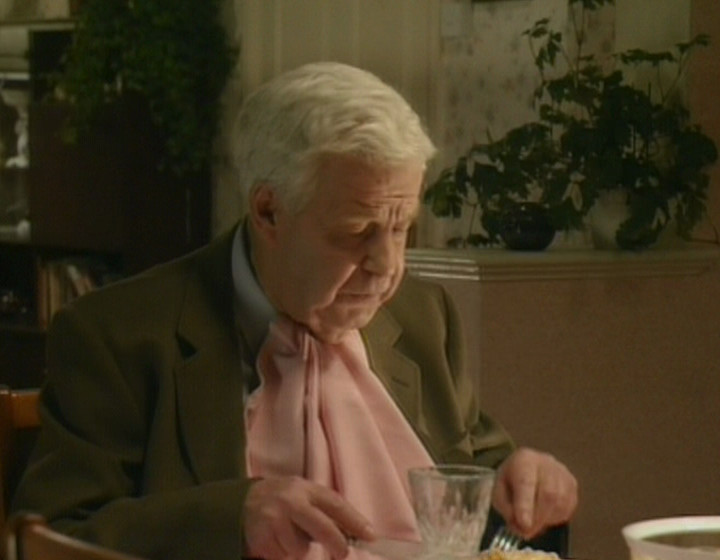
But come the next day in the kitchen, he very much does:

And he also does later on in the living room, in the scene where Alfred and Victor finally click:
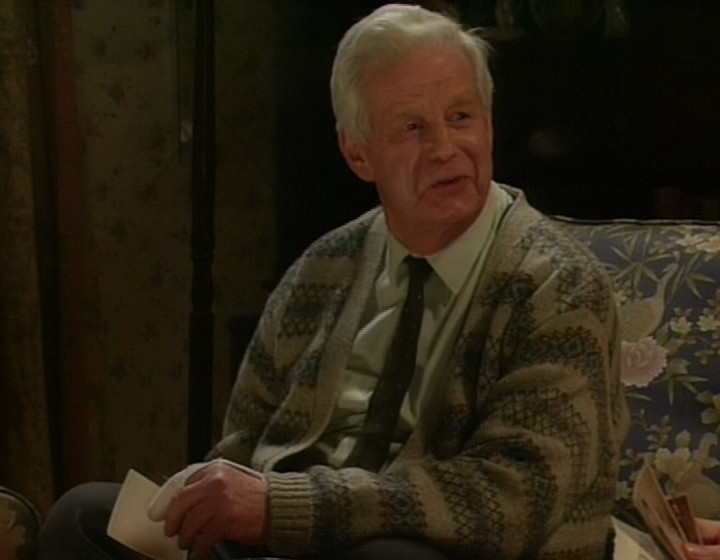
To be fair, I don’t see the sudden appearance of a bandage as a continuity error. Alfred is so accident-prone, it seems entirely possible to me that he had a nasty incident off-screen at some point between the first two scenes. Indeed, considering Alfred’s smashing of the mirror overnight, we may not even need to reach particularly far for the answer.1
Regardless of in-universe explanations, we can tell that these later scenes were definitely not shot in the same session as the earlier one. And here is where our kitchen cabinets come back into play. Take a look at the different placing of the objects in these two scenes – specifically, the placing of the plant in the cabinet:
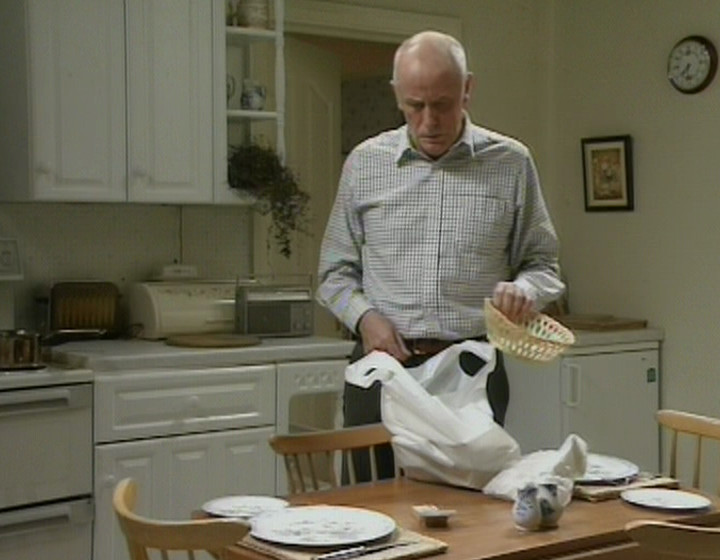
Main Shoot
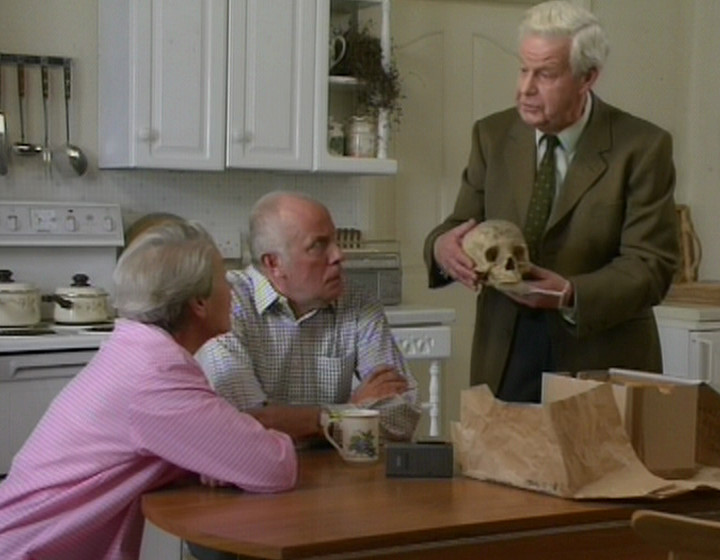
Later Shoot
In the original shoot, the plant in the cabinets is on the lower shelf. Once we get to the later scenes, the plant magically jumps up to the middle shelf.
We can even tell that the final scene of the episode – once Alfred has left in dismay – was definitely shot in the original session, as the plant leaps back to the lower shelf:

Later Shoot
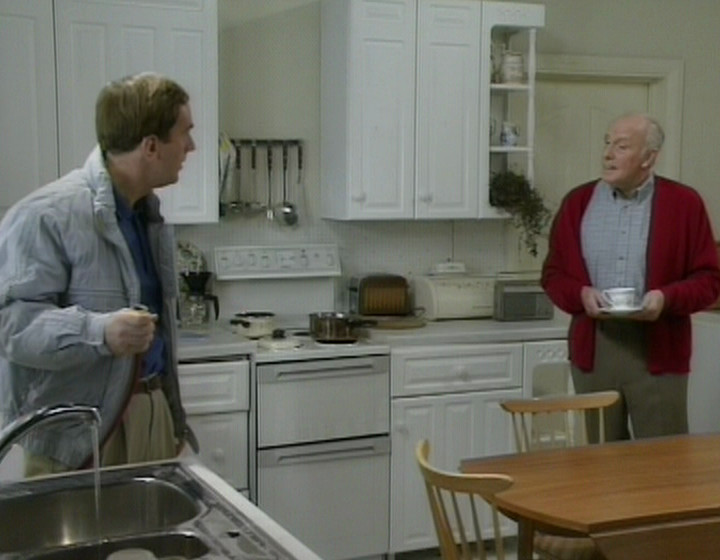
Main Shoot
So the question is: can we figure out exactly when these later scenes with Pearson were shot? Sure, Webber’s book says that they were recorded the following week, but as we’ve already proved elsewhere, statements like this aren’t always entirely accurate. People’s memories fog over in the intervening years.
Firstly, let’s take a look at the recording dates for the main audience sessions for Series 3:
| Episode | RX | TX |
|---|---|---|
| Monday Morning Will Be Fine | 17/11/91 | 2/2/92 |
| Dreamland | 10/11/91 | 9/2/92 |
| The Broken Reflection | 1/12/91 | 16/2/92 |
| The Beast in the Cage2 | 24/11/91 | 23/2/92 |
| Beware the Trickster on the Roof | 15/12/91 | 1/3/92 |
| The Worst Horror of All | 8/12/91 | 8/3/92 |
Our first thing to note: the majority of “The Broken Reflection” was shot on the 1st December 1991.
Our second thing to note: unlike Series 2, the recording and transmission orders of Series 3 of One Foot in the Grave are quite different from each other. But the important thing for us here is that we can see that “The Broken Reflection” was recorded fourth in the run; “The Worst Horror of All” was recorded the week after, and then “Beware the Trickster on the Roof” was last. Which means that Pearson’s later scenes must have been shot during one of those final two episodes.
We already know these later scenes were done when the kitchen cabinets were in the following configuration, with the plant on the middle shelf:

So all we have to do is look at the state of the cabinets in the last two episodes recorded:
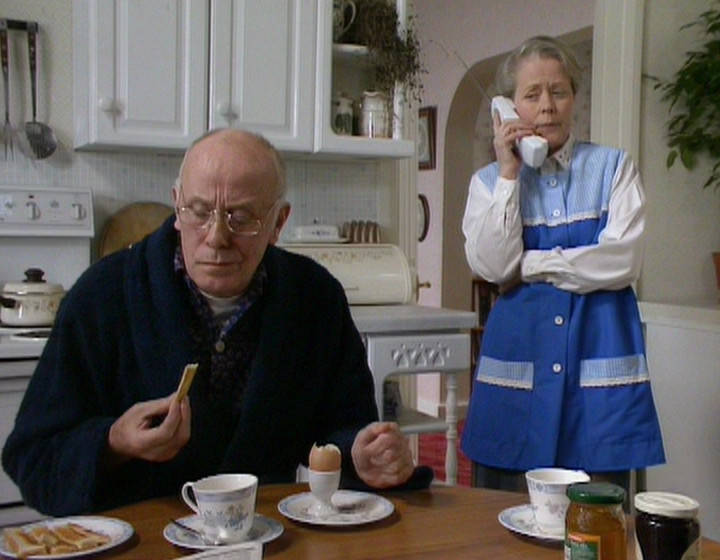
The Worst Horror of All
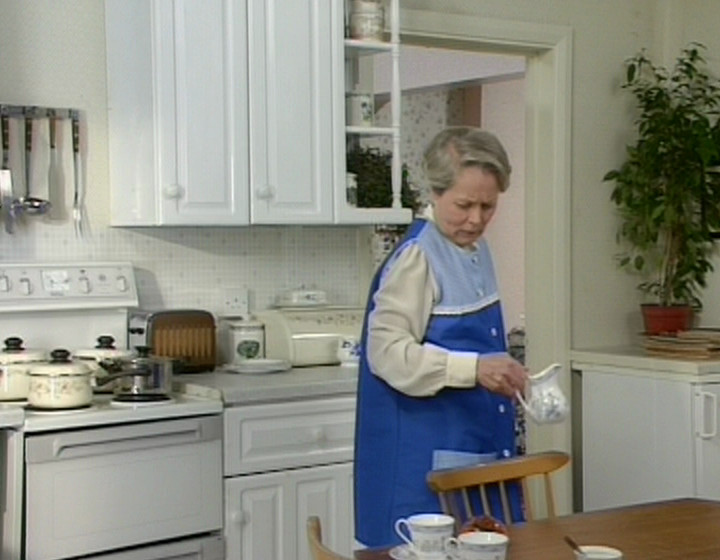
Beware the Trickster on the Roof
There we have it. Richard Pearson’s later scenes were shot during the production of “The Worst Horror of All”, on the 8th December 1991. Which was, in fact, the week after the recording of “The Broken Reflection”, just as Webber’s book claims. Although it’s nice to figure out the actual episode.
And I think it’s worth pointing out: there’s no disappointment attached to proving the book to be right. Over the past year, I’ve done a lot of these kind of investigations. Some anecdotes I’ve conclusively proven false. Some have been “ehhh, sort of, but it’s not the whole story”. And some have turned out to be entirely true. There’s a real joy to be had in everything matching up nicely, just as much as when proving something to be incorrect.
Which does leave us with one final observation. Have you noticed what’s different in the Meldrews’ kitchen during “The Broken Reflection” compared to every single other episode of Series 3?
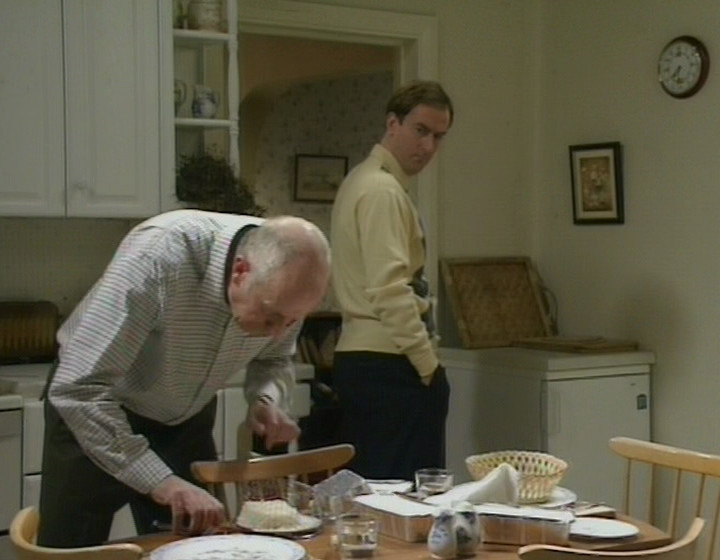
The Broken Reflection (Main Shoot)
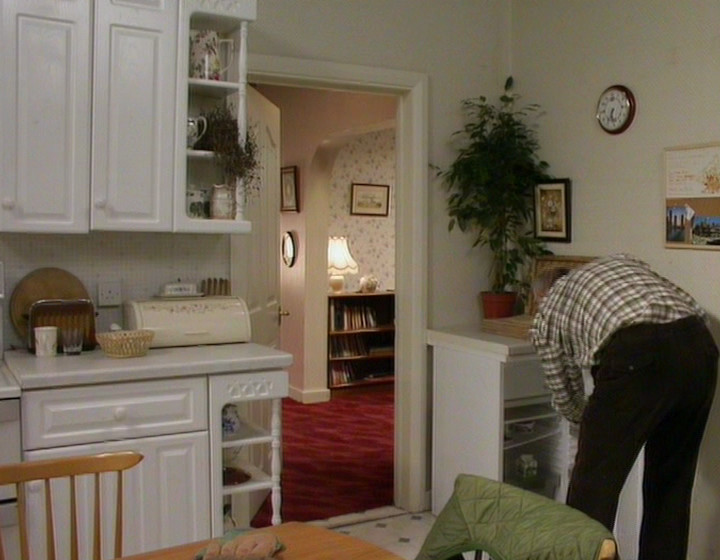
The Worst Horror of All
Yes, for some reason – God knows why – the plant on top of the fridge which is present in every other episode is missing during “The Broken Reflection”. So did they remember to remove it when shooting the Richard Pearson material during “The Worst Horror of All”?

The Worst Horror of All

The Broken Reflection (Later Shoot)
Unbelievably… yes, they did. And it does amuse me that they didn’t change the position of the plant in the cabinet, but remembered to remove the plant on the fridge. Still, if I’m going to spend ages writing about obscure continuity errors in the show, it seems worth pointing out when they got it right too.
My New Year’s resolution, incidentally: don’t write anything about the Meldrews’ kitchen cabinets throughout the whole of 2022. A resolution which feels doomed to failure already.
With thanks to Tanya Jones.
It’s at moments like this where I feel particularly stupid. I totally understood that the title “The Broken Reflection” refers to Victor and Alfred being warped mirrors of each other. But I only just realised when writing this article that Renwick literally smashes a mirror halfway through the episode as well. ↩
Some of you will have a question about this one. “The Beast in the Cage”? Wasn’t that an all-film episode, shot without an audience? Why does it have an audience recording date?
The answer is that the production still needed to play the episode to an audience, in order to record their reaction for the final show. The paperwork is very specific on this: “All FILM episode that was played in for audience reaction on above production date.” If we’re to trust the paperwork, this actually took place in TC3 at Television Centre, rather than using the Radio Theatre or similar, like some productions. ↩

One comment
Zoomy on 28 December 2021 @ 10am
I certainly hope to see a whole lot more articles about the Meldrews’ kitchen cabinets in 2022! I really love this stuff – I was watching a Thin Blue Line the other day and noticed the alphabetical files in the cabinet behind Fowler’s desk jump into a different order for a close-up of him sitting down, and I think it’s absolutely essential for all that kind of thing to be fully documented. What else is the internet for?
Intriguing that the all-film episode had a day in the studio like the others, but I guess it makes sense – presumably they would have been automatically allocated six weekly studio days when the series was commissioned, and they might as well use it as a cinema to get the audience reaction…
Comments on this post are now closed.